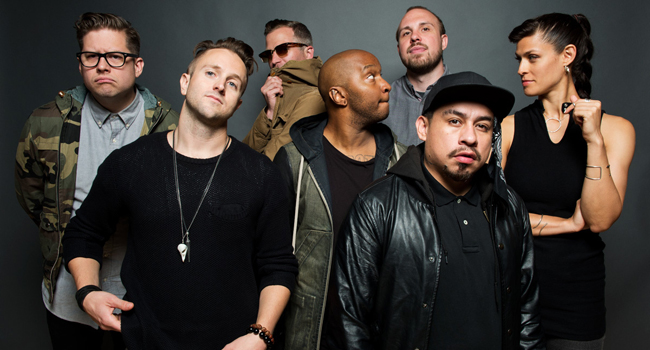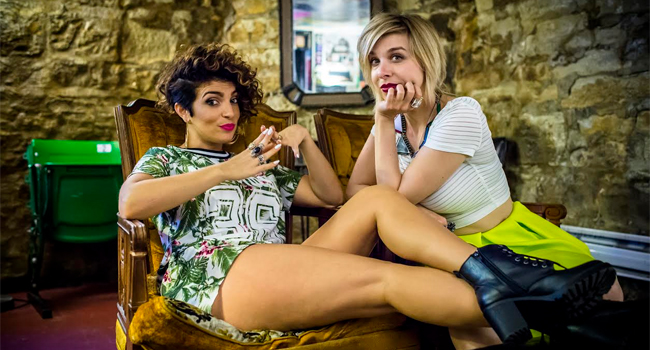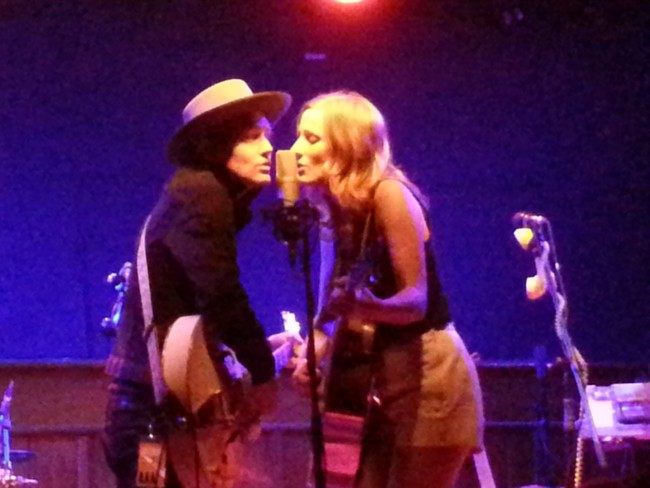After four years as classmate at New York’s prestigious Pratt Institute, Jacob Gossett and Thomas Mullarney joined artistic forces to create Beacon, an EDM group with a true musical backbone. Pop ’stache caught up with the duo before their stint opening for El Ten Eleven at Lincoln Hall on October 18 to talk ’80s nostalgia, ready-made prom sets and Beacon’s first full-length album.
Pop’ stache: Since the two of you studied different mediums at Pratt, neither of them being music, do you feel that other forms of art inspire you?
Jacob Gossett: Definitely, a lot of the early stuff we did was between art installations and video projects and music, and it’s slowly evolved into songwriting.
P’s: Your trailer for “No Body” has a lot of ’80s aesthetics. Do you feel you’re inspired by a particular decade?
Thomas Mullarney: I wouldn’t say a particular decade for everything we do, but that video was certainly inspired by an ’80s aesthetic. We were thinking about Carrie and Heathers a lot and this brooding teenage sexuality. There’s some innocence and some risk-taking involved in that, and we wanted to tap into that “high-school-in-the-’80s feeling.”
P’s: I could definitely feel that from watching the video.
JG: Yeah, like a scary prom.
TM: We found some great reference images out of made-to-order prom sets.
JG: Yeah, we built that set ourselves.
P’s: Do other artists inspire you?
TM: We just finished writing our first full-length record and I think what really inspires us is learning how to use a new instrument and pulling out all the sounds that we could. We really just have the sounds inspire us. It’s less specific to an artist and more the act of being familiar with our gear and learning a new instrument.
JG: I think our influences are pretty broad. I think there’s a lot of things we pull form, but nothing specific as a single artist.
P’s: It seems that you guys pull a lot of R&B beats and combine it with ambient qualities. How would you classify your music as a genre?
JG: I think those are big elements. People often talk about our music in relationship to R&B, but there’s still a dance music element that’s important to the sound. I don’t think we fall directly into R&B.
TM: There’s R&B from the singer’s perspective—there are R&B tropes and ways to sing R&B—and I’m never consciously thinking about those. Some people definitely get R&B from our music, but that sounds really forced. It’s not played that much into our creative process.
P’s: How do you guys set yourselves apart from other bands? Is it subconscious?
JG: I don’t think you can ever consciously do that. I think that over time you just develop a sound and thinking hard about how we want to approach music. I never set out to sound a certain way.
TM: We’re also lucky because between the two of us, we listen to a lot of different things, so even if we wanted to come in and recreate what we’re listening to, there will be two different waves. Whatever the product is a combination of, there are two different sensibilities instead of just one influence.
We introduce each other to new things and I think that allows us to be somewhere in between things.
P’s: Your lyrics are rather dark, but the way you sing can be considered a bit honey-coated. Is this disparity on purpose?
TM: Everything lyric-wise is purposeful, but the lyrics really grow out of the tones and atmosphere of the sounds that we’re building. The way that I sing is just natural.
P’s: It’s not overly brooding …
TM: It’s not, and that’s definitely purposeful. I think that the lyrics in themselves contain that duality in darkness and triumph of lightness. So the way that they’re sung is more trying to cater to that more than anything.
P’s: What are your goals for your live show?
JG: Because we started in installation art, we’re really into video art. In the near future we’re going to spend a lot time working on video art to complement our themes in our music. And the visual sensibility of what we do. There’s always a lot of energy behind that.
P’s: What’s coming up after this tour?
JG: We are immediately going into the mixing studio. We just finished the demos for our full-length album.
TM: It’s all written. It’s just a matter of going into the studio and re-recording the vocals.
JG: Pretty much all of November will be spent doing that. It’ll be out early next year.
P’s: One website ![]() described your sound as the “strange, empty time of night when the party’s over and everyone’s gone home, but you can’t sleep, so you sit and stare into the dark …” What do you imagine people do when they listen to your music?
described your sound as the “strange, empty time of night when the party’s over and everyone’s gone home, but you can’t sleep, so you sit and stare into the dark …” What do you imagine people do when they listen to your music?
JG: That description was good because that was some of the idea behind our trailer and the “No Body” video.
TM: There’s something taken out of that super cheerful situation but there’s still romance there.
That’s just what Beacon’s music taps into—the romanticism of detachment, the irresistible draw of the shadows that lurk behind closed doors. Beacon is a soundtrack for those dark moments that sway to and fro from the light, and that uncertainty is what makes listeners want to hear more.


